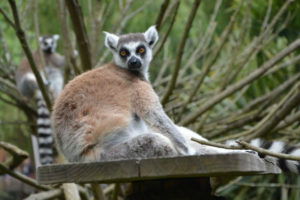Madagascar, the fourth largest island in the world, is located in the western part of the Indian Ocean, off the East Africa Coast. It was previously referred to as the Malagasy Republic. Madagascar may rank as one of the poorest countries in the world with 70% of the people living below the poverty line, but is still among the safest countries owing to the Malagasy culture. It has a wide expanse of white sandy beaches and vast forests.

Due to its rich biodiversity, it is considered a biodiversity hotspot with 90% of its wildlife being endemic species and unique only to the country. For example, the lemur and the see-through chameleon. Listed below are the top 6 must-see destinations in Madagascar.
Antananarivo
The capital and the largest city in Madagascar is one of the most vibrant cities in Africa. Crazy and chaotic is perhaps another description you might choose to give Antananarivo and its Malagasy inhabitants. It combines intricate architecture with multi-colored houses winding down the hills, fascinating cultural background of the Malagasy people, and an affluent historical background. It is a few kilometers from the airport and therefore receives a number of tourists.
Andasibe National Park
Andasibe is the most visited area among all the protected areas. The lemur species call Andasibe National Park home. Eleven lemur species including the largest one are found in this park near Antananarivo, its capital. It is also a habitat for several species of reptiles, birds, insects, and batrachians. The area stands on a 100-mile expanse of land and has been further split into two. A tour guide of both areas could take about one to six hours.
Ranomafana National Park
Like the name suggests, Ranomafana National Park is located near the village, Ranomafana. The popular park has amazing scenic views of densely forested hills with springs and beautiful wildlife. One interesting species found in the park is the golden bamboo lemur. It feeds on bamboo shoots which contains doses of the harmful cyanide. Surprisingly, what could be lethal to other animals has been harmless to this lemur. The discovery of this species in 1986 is what led to the creation of the park in 1991. If you dare to venture into the deeper forested areas, you will experience the pleasure of a real wildlife expedition.
Avenue of the Baobabs
This location has made its way to the top visited locations in the country because of its striking and gorgeous view. The dirt road between Morondava and Belon’I hosts the Avenue of Baobabs which consist of about 25 trees standing towering above others and lined up in groups. The trees believed to be about 800 years old, previously existed in a dense tropical forest. Due to human encroachment and agriculture, the forests were cleared leaving the baobabs alone. It has been a focus of local conservation efforts with the Ministry of Environment, Water, and Forests, granting it protected status. Plans are underway to make it the first national monument in Madagascar.
Isalo National Park
It is sometimes referred to as the Jurassic Park. Isalo national park has a breath-taking view of landscapes and terrains. The park is located in Madagascar’s central southern region and boasts of steep canyons, sandstone formations, and grassland that is to die for. Guided tours are available in this park and they range from a couple of hours to several days. The Bara tribe consider Isalo a sacred place where burial sites are marked by stacks of tiny stones in the crevices.
Ile Sainte Marie
This beautiful island has a rich history dating back to the 17th and 18th centuries. It was a pirate hub with pirate shipwrecks still visible, even today, in the shallow water. It’s a famous attraction site especially for snorkeling lovers due to the crystal clear still water. During summer and early fall, humpback whales can be seen in the island waters as they migrate.





